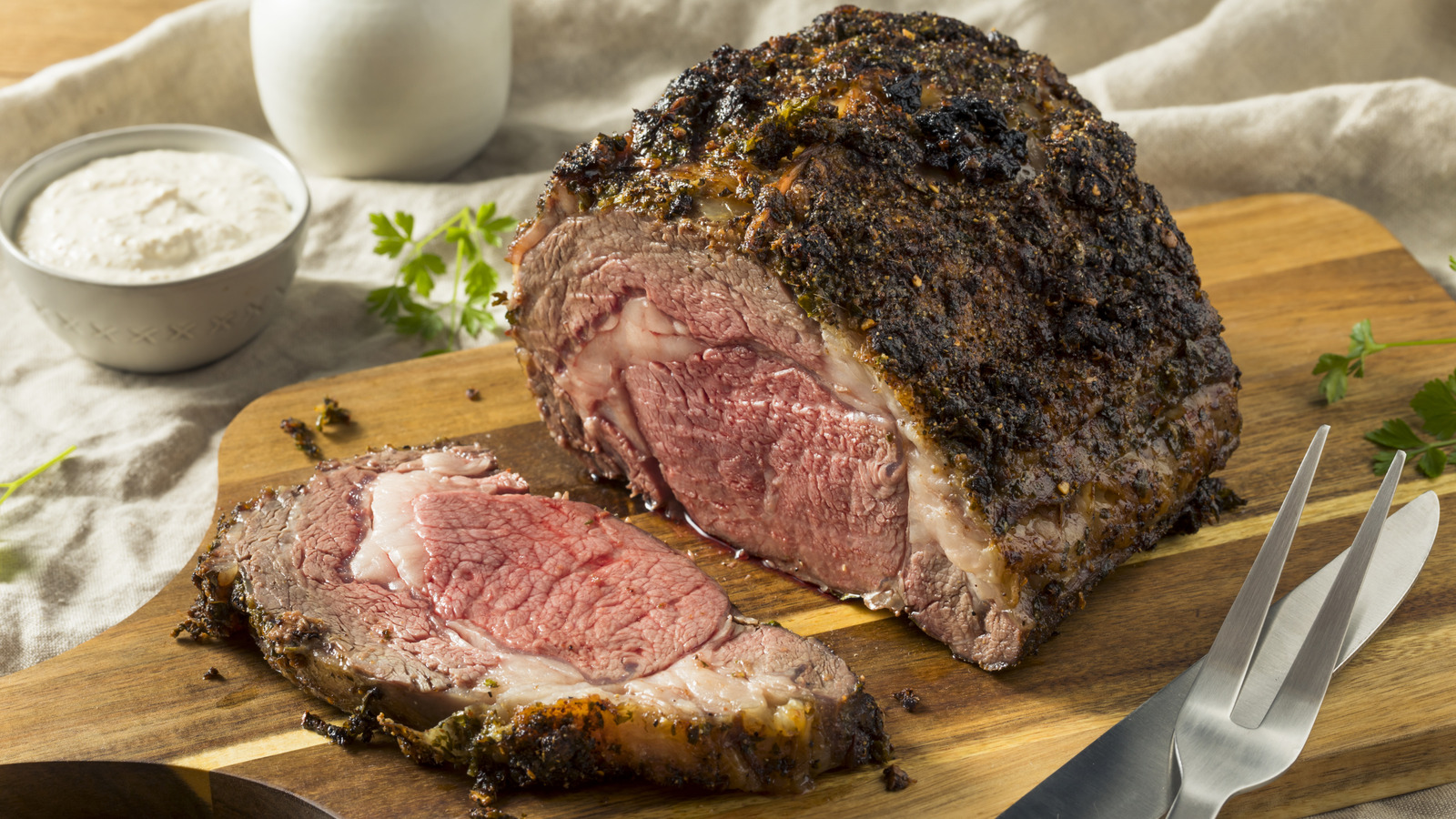
"The prime rib is a premium cut taken from the most tender part of the cow: the meat attached to the ribs. A four-bone prime rib can cost close to $250 - if you follow the one-pound-per-person rule, this can feed at least eight dinner guests. The best technique to cook the meat is to reverse sear it. Instead of searing the outside on a hot skillet and then basting it to make sure the inside cooks through, when it come to prime rib, you want to first season and cook it low-and-slow in an oven, before moving it to a pan to give it a quick sizzle and a nice crust."
""In this case, you do want the outer surface of your roast to dry out further. That way, when you reverse sear, you get a super crispy, melt-in-your-mouth bite," Jean-Pierre said. "If you choose to cover the roast while it's cooking, it may remain too moist and could miss out on a sizzling, crunchy exterior from the reverse sear.""
Prime rib is a premium cut from the rib section, prized for tenderness and significant cost; a four-bone roast can feed about eight people using the one-pound-per-person guideline. The optimal method is reverse searing: season and cook the roast low-and-slow in the oven, then finish with a hot pan sear to form a crust. Covering the roast while it cooks traps moisture and keeps the outer surface too wet, preventing the dry surface needed for a successful Maillard reaction and a sizzling, crunchy exterior during the final sear.
Read at Tasting Table
Unable to calculate read time
Collection
[
|
...
]